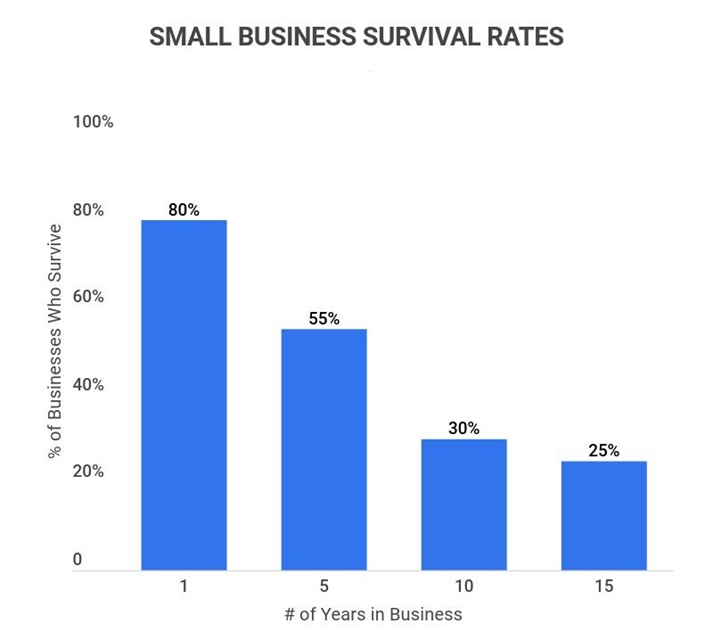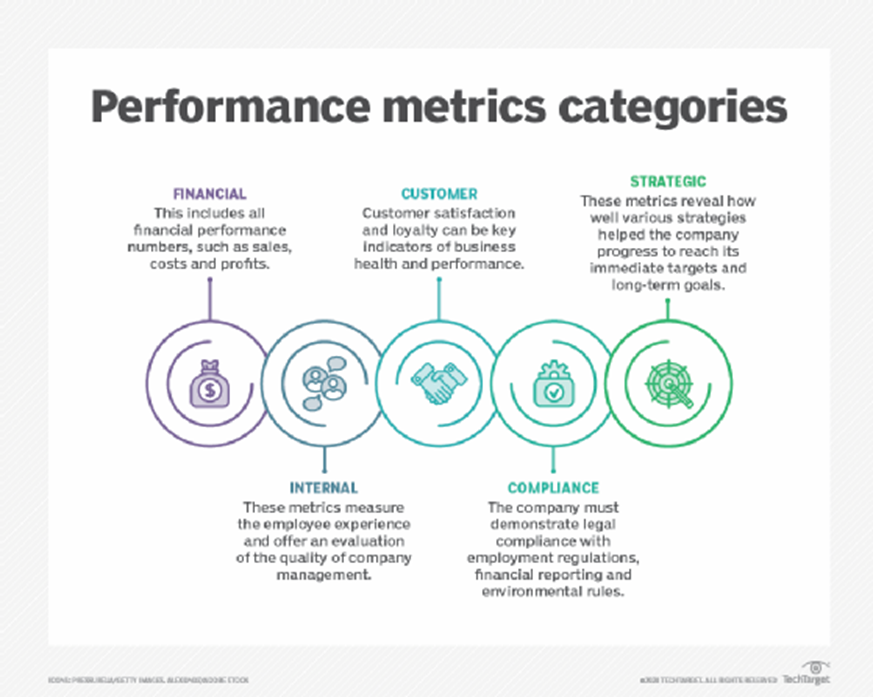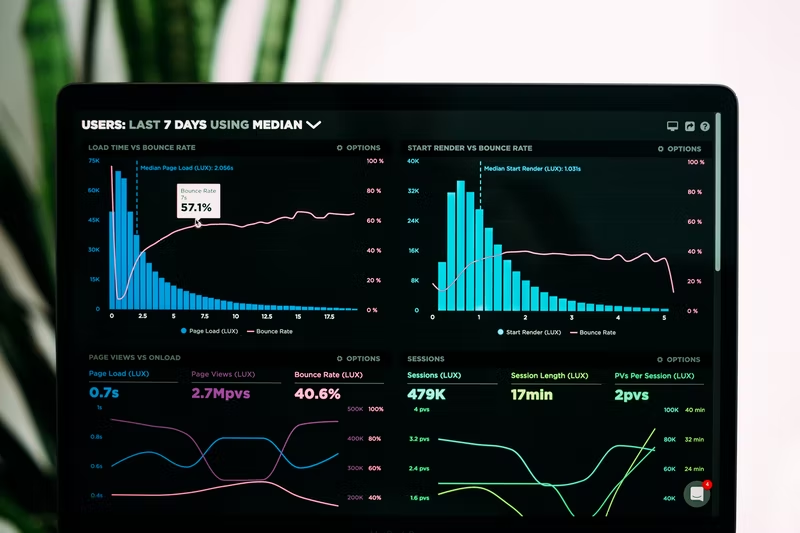Jump to a section
A growing, healthy, profitable business is the goal for startups and more established enterprises. If you want to scale your business and plan, you need to monitor its progress and identify where change must happen.
But business growth isn’t straightforward to determine, that is without data. Businesses, especially those with an online component, generate large quantities of data. It’s important to know which figures and stats to look at and what they mean.
Business metrics, also known as performance or growth metrics, consists of data from sales, customer interactions, marketing, and various other business activities. Business metrics provide a valuable pulse check of a business and show longer-term tendencies.
Why Business Metrics Matter
New businesses can fight for survival in their first years. Your business thriving longer term means knowing what’s working and what’s not. Business metrics can reveal warning signs and positive developments. A lot rests on getting a detailed, data-driven picture of where your company is. It could inform your decision to seek business growth funding or scale back in certain areas.
Traditionally, a business’s success was measured solely in terms of profit. But in the digital age, other factors influence a business’s success. Looking at metrics, such as AARRR Metrics, allows you to make decisions based on business performance on customer satisfaction and retention and how competitive you are with price and quality compared to your rivals.

Which Metrics to Monitor
Which metrics you decide to track will vary depending on the nature and value of your business. The key metrics we will cover here are a selection rather than an exhaustive list. Often the choice of which metrics you look at to measure growth will be driven by concerns about certain areas of your business activity.
You might, for example, be interested in customer metrics following investment in marketing or upping your social media activity. Or you might be more curious about how revenue is growing, having launched new products. We’ll look at three main categories of business metrics, broken down into greater detail.
Acquisition
Keeping track of new customers and incoming business driven from your website or other channels is what Acquisition is all about. We’ll look at three areas that are beneficial to monitor.
1. Website Traffic
It’s important to avoid focusing on a snapshot with website traffic; what’s happening month-by-month can be more illuminating. Likewise, with social media activity; look at the fluctuations rather than the total number of followers. This way, you can plan a data-driven social media strategy. Website traffic should be increasing; monitoring it will reveal whether your SEO or marketing strategies are working for your company or falling short.
Look at what’s happening with your bounce rate and note leads per month; the number of visitors who sign up. Notice how long on average consumers spend on the site; is this increasing? Is it staying static? How many are returning customers? How many are new?
Determine what content gets the most traffic—the products or services, blog posts, pricing pages, discounts, or special deals. Monitor which areas have an increasing volume of traffic; these are indicators of growth.

2. Conversion Rate
A conversion following a visit to your site is the ultimate goal, but while not every visit will end in conversion, this number should be steadily increasing. A conversion isn’t necessarily a sale, it could involve the customer signing up for a demo, consultation, or alerts. A customer could also have downloaded an asset or interacted with the blog.
Giving your firm the best chance of increasing conversions can be helped by improving communication and accessibility between you and your clients. For example, you could look at how to get a virtual phone number or add chatbots to your website. Your conversion rate is data your business can use to predict future revenue resulting from conversions.
3. Customer Acquisition Costs
While acquisition metrics are important, so is the cost. In other words, how much is your company spending on getting someone to visit the website and become a customer? To gain something in business, there’s always a cost, but some gains like investing in a small business IP phone are worth the outlay.
But the price of getting a new customer can be a surprisingly unknown quantity unless you drill down into the data. Look at what you’ve spent on marketing and selling; divide the total by the number of new customers gained. Judge which channels are bringing in the highest volume in comparison to their cost. You can use this information to plot your forward marketing trajectory.
Customers
Growth isn’t solely a numbers game of getting new customers. You also need to keep your existing customers happy and loyal, by building a relationship based on trust and good service. But how do you know if you’re getting this right? How do you measure this?
4. Customer Engagement
Exactly which parts of your business’s offering customers are engaging with and why, is an essential growth metric. If your active users aren’t growing in number, it means your brand awareness isn’t growing either.
Establish if you’re giving customers enough useful, professional templates such as PandaDoc commercial proposal template, adequate opportunities to make comments and interact, or attractive enough reasons to sign up for alerts or newsletters. This metric may seem less important than looking at sales or profits, but a lack of engagement now could lead to lower profits in the future.

5. Customer Retention
Monitor what’s happening with customers falling away or sticking with you over time; analyse this in the context of what you’re offering, and judge if anything you’re doing could account for any drop or rise.
Retaining customers saves money; it’s cheaper to keep loyal customers happy than to attract new ones. Existing customers are more likely to make purchases and try new products or services, but only if you have a track record of good service and quality purchases. Look at Bitrix24 alternative, a platform for customer relationship management or a CRM, if you want your business to take charge of this key area.
6. Customer Churn
Related to retention, customer churn is the business metric that shows how many clients stop doing business with you over a given period. There are several ways a customer can be lost. They might cancel a regular purchase and go elsewhere, or they might unsubscribe or unfollow. If this rate is high, something is going wrong, and you need to get to the root cause.
This metric is particularly important for businesses that rely on regular subscribers or monthly purchases with the same clients. The cause could be uncompetitive pricing and problems with customer service or goods.
![]()
Revenue
Without revenue, all the hopes and dreams and great plans for the future of your growing business won’t materialize. Businesses need to pull in revenue to fund themselves; it’s a vital business metric.
7. Sales Revenue
Sales revenue can’t be overestimated in its importance. Although, when looking at revenue, where your business is in terms of its development, will affect how much you can realistically achieve. New businesses, for example, might have more modest revenue targets than established ones. But all businesses, no matter what size or age, should see growth in their revenue.
You’ll get a clearer picture of what’s happening with revenue if you also look at sales funnel metrics, in other words, the customer’s journey to purchasing in the first place. If certain channels drive more revenue than others, it’s worth noting.
8. Monthly and Annual Recurring Revenue
If your business plan is based on recurring annual or monthly revenue, this is a metric to monitor. Many businesses function by having paying subscribers; if you’re gaining subscribers, you can bank that income for the following year, as it’s guaranteed.
If you calculate how much each subscriber is contributing, you can get a sense of if you’re attracting the right level of subscribers. For example, if subscribers paying the lowest or highest ticket option are increasing or decreasing. Armed with this information, a company can judge if they are marketing to the right group and how this might impact future revenue.
9. Revenue Churn
How much revenue you’re losing is as critical as your profit margin. If you look at a specific period, you could spot what might be contributing to revenue churn. For example, do you have the right pricing strategy?
Was there an influx of customer complaints about deliveries or products which coincided with a loss of subscribers? Are there some rough patches in your customer journey that could account for churn? Look at this metric and discover what’s happening, why, and when.
Shining a Light
Understanding business metrics will enable you to break your business down into its parts, to understand and manage the whole, much like segmentation solutions. Appreciating how each set of data tells you something distinct about the health of your business and its progress is invaluable.
Rather than looking at sales revenue or customer churn in isolation, noticing how each business area affects another, and shining a light on why numbers are growing, shrinking, or static is how you light the way ahead for your business and drive growth.










